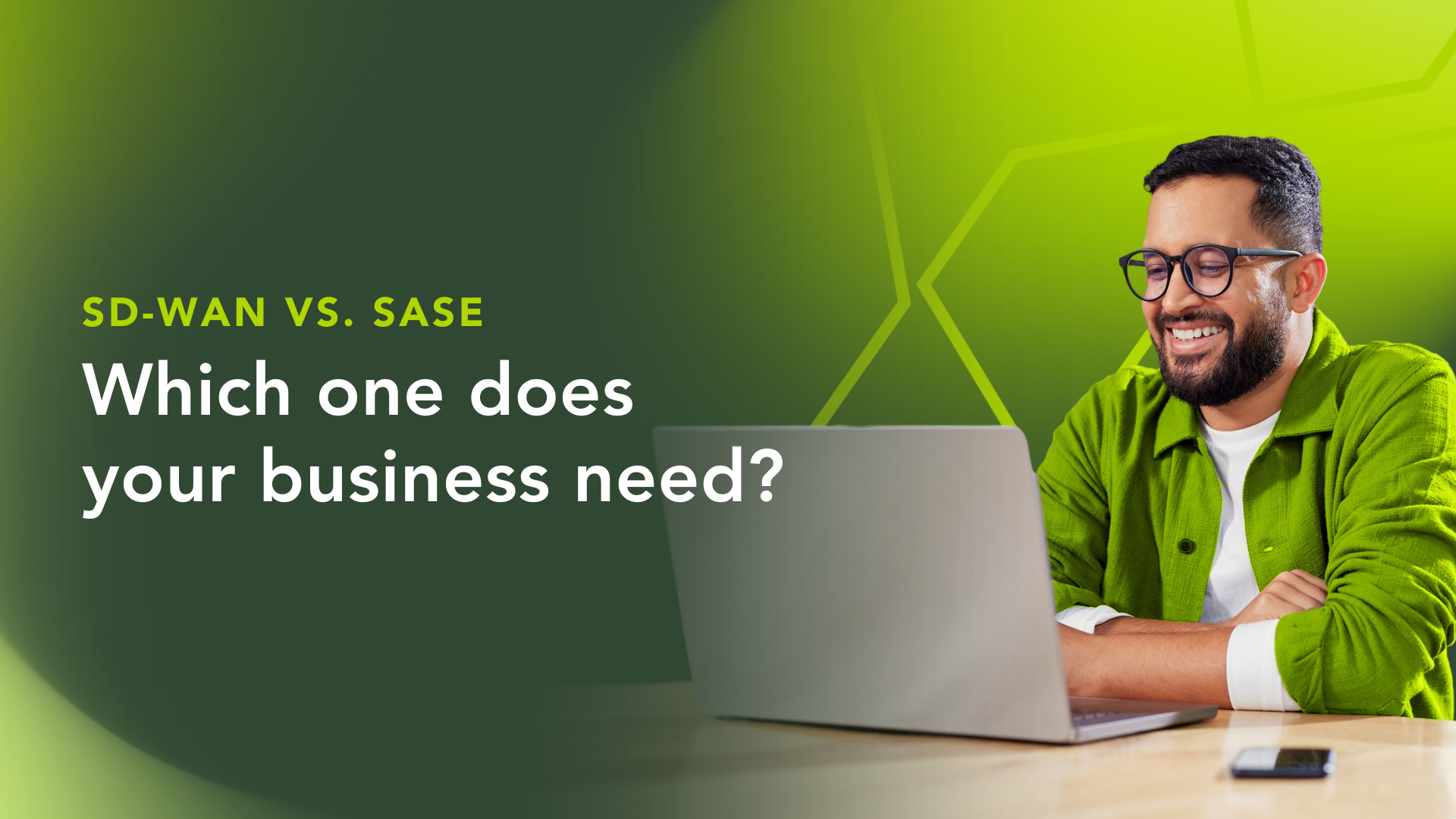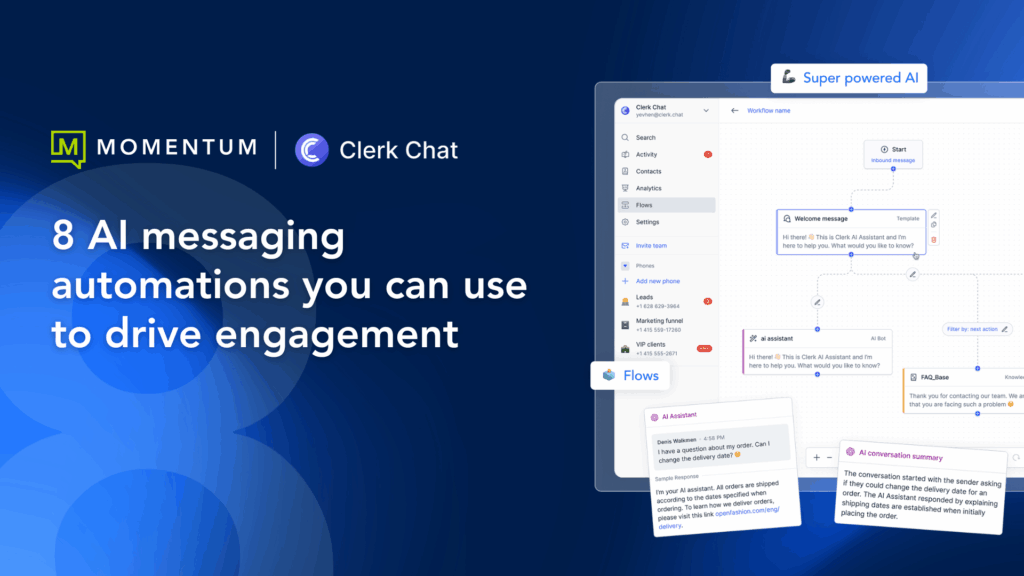Software-defined networking (SDN has gained a lot of traction over the past few years, making it the perfect fit for the modern workplace.
An SDN is more cost-effective, flexible, and scalable than traditional infrastructure. It can quickly evolve alongside a business’s changing networking requirements while also giving administrators significantly more control over and visibility into their networks. Done right, this enables more secure, dynamic network management.
When it comes to SDN, the two most popular options include:
- Software-Defined Wide Area Networking (SD-WAN)
- Secure Access Service Edge (SASE)
But which option is best for your business? Learn key differences between SD-WAN and SASE and how to make the right choice.
A quick primer on wide area networks
A WAN consolidates multiple locations into a single geographically dispersed network. These locations can be anything from home offices to data centers.
Because they frequently span vast distances, WANs are traditionally somewhat complicated to configure, manage, and maintain. They require specialized networking hardware and connectivity to multiple kinds of infrastructure.
What is SD-WAN?
An SD-WAN is exactly what it sounds like: A fully virtualized wide area network.
Instead of relying on physical network appliances, it creates a digital overlay that integrates with your existing connections. Other common features of SD-WAN include:
- Centralized configuration and policy enforcement.
- Automatic traffic routing and prioritization.
- Real-time network monitoring.
- Virtual network segmentation.

What is SASE?
SASE is a cloud-based evolution of SD-WAN focused on applying security directly at the network’s edge.
First introduced as a concept in 2019 by analyst Gartner, SASE combines the core functionalities of SD-WAN with security services that include, but aren’t necessarily limited to:
- Cloud Access Security Broker (CASB): A security tool that both monitors activity and enforces security policies.
- Secure Web Gateway (SWG): Identifies and restricts malicious Internet traffic from entering sensitive internal networks.
- Firewall-as-a-Service (FWaaS): A subscription-based replacement for on-premises firewall solutions.
- Zero Trust Network Access (ZTNA): A model that requires authentication and continuous verification from all devices and users.
- Data Loss Prevention: Tools and processes designed to protect the security and integrity of sensitive data.
SASE amplifies many of the benefits offered by SD-WAN.
It further streamlines IT infrastructure, consolidating network management and security into a single platform. The technology’s identity-driven approach to security allows administrators to apply more granular and contextual policies. Finally, its focus on protecting edge devices both reduces latency and represents a much-needed evolution in network security.
What differentiates SD-WAN from SASE?
Given that SASE integrates SD-WAN, it’s no surprise that there’s considerable overlap between the two. Both technologies virtualize an organization’s WAN architecture and enable secure access with centralized network management. However, the two differ from one another in a few crucial ways.
| SD-WAN | SASE | |
|---|---|---|
| Core Focus | Optimizing network efficiency and performance | Optimizing and securing the entire network |
| Security | Typically requires third-party integration | Comprehensive out-of-the-box security |
| Architecture | Connects locations and networks | Connects endpoints to the service edge |
| Traffic Handling | Follows preconfigured routing policies and backhauls traffic through data centers | Sends traffic through globally distributed points of presence (PoPs) |
| Remote Access Capabilities | Requires third-party integration | Built-in |
| Required Skills | Can usually be managed by a traditional network team | Knowledge and expertise overlap between cloud, security, and networking teams |
Core Focus
SD-WAN: Optimizing network efficiency and performance
SASE: Optimizing and securing the entire network
Security
SD-WAN: Typically requires third-party integration
SASE: Comprehensive out-of-the-box security
Architecture
SD-WAN: Connects locations and networks
SASE: Connects endpoints to the service edge
Traffic Handling
SD-WAN: Follows preconfigured routing policies and backhauls traffic through data centers
SASE: Sends traffic through globally distributed points of presence (PoPs)
Remote Access Capabilities
SD-WAN: Requires third-party integration
SASE: Built-in
Required Skills
SD-WAN: Can usually be managed by a traditional network team
SASE: Knowledge and expertise overlap between cloud, security, and networking teams
Choosing Between SD-WAN and SASE
At first glance, SASE is the obvious winner. After all, it’s an evolution of SD-WAN, right? That doesn’t mean it’s automatically the right option for every business.
When to choose SD-WAN
SD-WAN may be the better choice for organizations that simply need to manage their network infrastructure more efficiently.
Organizations with remote access and integrated security tools already in place may also prefer an SD-WAN deployment, as they won’t be required to replace any existing tools.
When to choose SASE
Businesses looking to enable remote and hybrid work should choose SASE. The technology is also a better option for any organization with considerable cloud infrastructure, though it often requires multidisciplinary expertise to manage.
Take the next step in Network Connectivity with Momentum
Software-defined networks arguably represent one of the most important networking technologies currently on the market.
Networks are the bedrock of modern business operations, from optimizing network performance to securely enabling distributed work. That’s why finding the right vendor to supercharge your networks is essential today.
With Momentum, you can optimize your network for maximum performance and cost savings. Our flagship SD-WAN solution is powered by the revolutionary Juniper Mist AI, allowing you to develop a flexible, intelligent, and future-proof network for any business application. We also offer industry-leading SASE through CATO.
Interested in learning more about our SD-WAN solutions for your business? Schedule a meeting today to explore your options.


